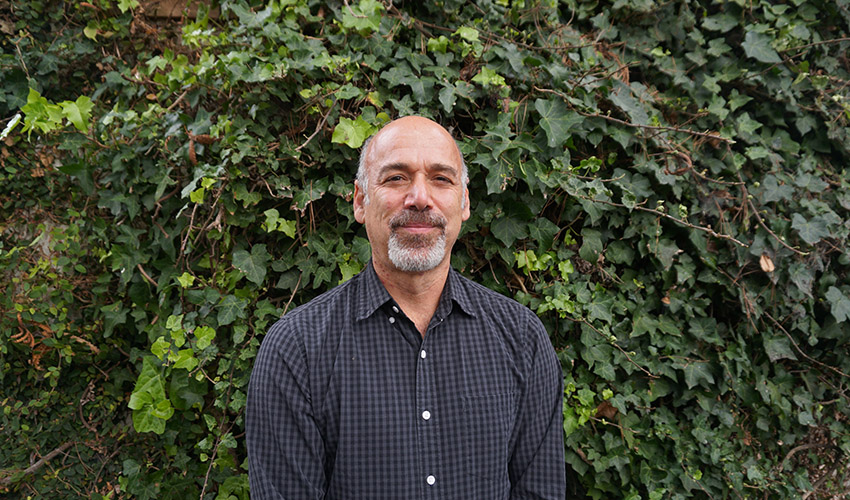Same-sex couples experience unique stressors

Professor of Sociology Allen LeBlanc. Photo credit: Carla Garcia
Study by SF State professor finds that institutionalized discrimination has lasting effects
Stressors faced by lesbian, gay and bisexual (LGB) individuals have been well studied, but San Francisco State University Professor of Sociology Allen LeBlanc and his colleagues are among the first to examine the stressors that operate at the same-sex couple level in two new studies conducted with support from the National Institutes of Health. “People in same-sex relationships are at risk for unique forms of social stress associated with the stigma they face as sexual minority individuals and as partners in a stigmatized relationship form,” said LeBlanc.
In the first study, recently published in the Journal of Health and Social Behavior, LeBlanc and colleagues conducted in-depth interviews with 120 same-sex couples from two study sites, Atlanta and San Francisco, and identified 17 unique pressures that affect LGB couples. Those range from a lack of acceptance by families to discrimination or fears of discrimination at work, public scrutiny, worries about where to live and travel in order to feel safe, and experiences and fears of being rejected and devalued. The researchers also found that same-sex couple stressors can emerge when stress is contagious or shared between partners and when stress “discrepancies” — such as one partner being more “out” than the other — occur.
“We wanted to look beyond the individual, to look at how stress is shared and how people are affected by virtue of the relationships they’re in, the people they fall in love with and the new ways couples experience stress if they’re in a stigmatized relationship form,” said LeBlanc. “One of those is feeling that society doesn’t value your relationship equally.”
“Changing laws is one thing, but changing hearts and minds is another.”
That perception is the focus of a second study just published in the Journal of Marriage and Family. LeBlanc found that feelings of being in a “second-class” relationship are associated with mental health issues — such as greater depression and problematic drinking — even after taking into account the beneficial impact of gaining legal recognition through marriage. In 2015, the U.S. Supreme Court legalized same-sex marriage, but the effects of long-term institutionalized discrimination can linger, according to LeBlanc.
“Our work is a stark reminder that legal changes will not quickly or fully address the longstanding mental health disparities faced by sexual minority populations,” said LeBlanc. “Changing laws is one thing, but changing hearts and minds is another.”
Even though people in same-sex relationships experience many unique challenges, research also shows that having a good primary intimate partnership is important for a person’s well-being, which is true for both heterosexual and LGB couples. “The unique challenges confronting same-sex couples emanate from the stigma and marginalization they face from society at large, not from anything that is unique about their relationships in and of themselves,” said LeBlanc. LeBlanc’s study builds on an emerging body of research suggesting that legal recognition of same-sex relationships is associated with better mental health among LGB populations — as has long been suggested in studies of legal marriage among heterosexual populations. “This new research suggests that legal marriage is a public health issue,” said LeBlanc. “When people are denied access in an institutionalized, discriminatory way, it appears to affect their mental health.”
LeBlanc said transgender individuals were not included in the studies because of other stressors unique to them; he noted that another study focused specifically on trans- and gender-nonconforming individuals is underway. He hopes his research will help people better understand and support not just same-sex couples but also other stigmatized relationships, including interracial/ethnic relationships or partnerships with age differences or different religious backgrounds. “It’s not just about civil rights for LGB persons,” he explained. “It’s about science and how society can be more supportive of a diversity of relationships that include people from all walks of life.”